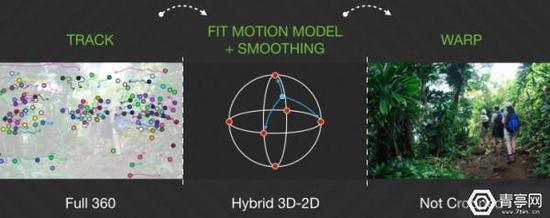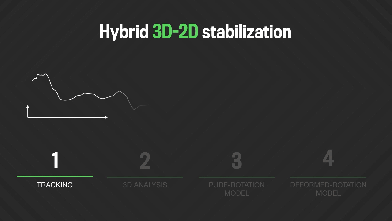Facebook's new technology can greatly reduce the stun of playing VR
Today, wearing a helmet to watch 360-degree video is nothing new, but many people still feel dizzy. Facebook recently announced a 360-degree video stabilization technology designed to reduce dizziness when watching.
It is reported that this new technology combines the traditional 2D motion module and 3D module, as well as the new "deformation rotation" module. The combination of these modules will greatly help the stability of the video.

Johannes Kopf, a scientist in charge of this technology development at Facebook, explained that he uses open source tools such as OpenCV and OpenGV. Although these tools are nothing new, they are unique in their use to stabilize video.
As shown in the figure, the team realized both 2D and 3D stabilization technologies in the same tool, bringing high speed and precise stability. The 3D Analysys module is for keyframes, and the tracker defines keyframes with blue nails. Once the 3D reconstruction is complete, the system can identify which are the camera's displacement and which are the rotational motion. After calibration, the keyframes are locked as reference points, and then the morphing rotation module works to unwind the final stable curve.

Maybe not everyone can understand the complex mechanism behind this, but at least the video should not be dizzy now. And in addition to stability, this technology also brings efficiency to video playback, and the bit rate can be reduced by 10-20% while maintaining playback quality.
People who have used software such as AE may know that traditional video takes time in post processing. With this technique, each frame of video can be stably less than 22 milliseconds, so that the time to post-process video is shorter than the playback time.
For the open source of this technology, Jay Parikh, vice president of basic engineering at Facebook, said: "We are still working on a plan to summarize our experience, and there is still a lot of research work in this area." So there is no open source yet.
At the same time, Kopft and his team are developing a time-lapse photography tool for 360-degree video. It is said that this tool can effectively prevent the feeling of acceleration in the VR content, thereby further reducing the possibility of vertigo.
Flush Mount USB Socket,USB Charger,Flush Mount Socket With USB Port,USB Flush Mount Socket
Dongguan baiyou electronic co.,ltd , https://www.dgbaiyou.com